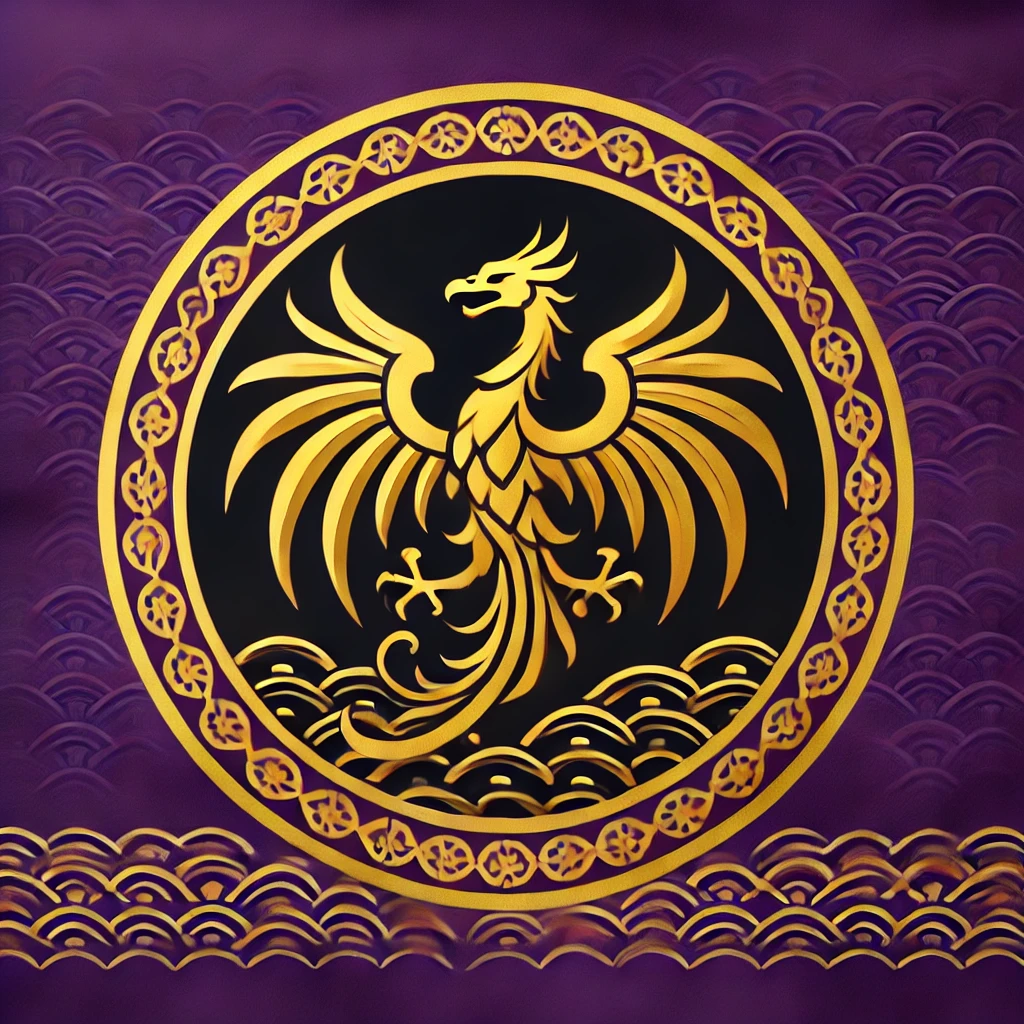Makan Empire / Great Empire of the West 145 AR - 890 AR
Capital City: Magasako, Island of Tongiu
Emperor Migsa II Morimori -160 AR
Emperor Jeosaon Morimori -204 AR
Emperor Usami Morimori -230 AR
Emperor Kamei Taneuji - 256 AR
Emperor Aso Hidekiyo - 277 AR
Emperor Ishikawa Hidekiyo - 285 AR
Emperor Tanaka Hokasu - 315 AR
Emperor Hashido Hokau - 332 AR
Emperor Migsa III Hokasu - 349 AR
Emperor Kawabe Hokasu - 358 AR
Emperor Migsa IV Tomomoto - 377 AR
Emperor Tomato Tomomoto - 387 AR
Emperor Hyoji Tomomoto - 389 AR
Emperor Itsusuji Tomomoto - 411 AR
Emperor Oniaya Yoshinbu II - 445 AR
Emperor Ieyasu II Yoshinbu - 457 AR
Emperor Toruda Yoshinbu - 471 AR
Emperor Hashido II Yoshinbu - 492 AR
Emperor Kerai Yoshinbu - 512 AR
Emperor Oniaya Yoshinbu III - 525 AR
Emperor Kerai Yoshinbu II - 559 AR
Empress Niriwa Yoshinbu - 580 AR
Emperor Ferido Yoshinbu - 601 AR
Emperor Asano Kiyomori - 643 AR
Emperor Tozawa Kiyomori - 645 AR
Emperor Asano Kiyomori II - 668 AR
Emperor Miyoshi Kiyomori II - 684 AR
Emperor Kerai III Kiyomori - 690 AR
Emperor Ichijo Kiyomori - 718 AR
Emperor Noyomaya Ariyatsu - 757 AR
Emperor Akmatsu Ariyatsu - 780 AR
Emperor Izumi Ariyatsu - 802 AR
Emperor Takano Aryiatsu - 802 AR
Emperor Liang Fu - 808 AR
Emperor Iwamura Yukimoto - 809 AR
Emperor Migsa V Tanueji - 809 AR
Emperor Migsa VI Yashuno - 810 AR
Emperor Feng Zhou - 814 AR
Emperor Feng Zhou II - 842 AR
List of Emperors
Format: [title][name] - [year they were crowned]Morimori Dynasty
Emperor Migsa Morimori -145 AREmperor Migsa II Morimori -160 AR
Emperor Jeosaon Morimori -204 AR
Emperor Usami Morimori -230 AR
Taneuji Dynasty
Emperor Minagawa Taneuji - 243 AREmperor Kamei Taneuji - 256 AR
Hidekiyo Dynasty
Emperor Jeosaon II Hidekiyo - 260 AREmperor Aso Hidekiyo - 277 AR
Emperor Ishikawa Hidekiyo - 285 AR
Hokasu Dynasty
Emperor Matsuda Hokasu - 290 AREmperor Tanaka Hokasu - 315 AR
Emperor Hashido Hokau - 332 AR
Emperor Migsa III Hokasu - 349 AR
Emperor Kawabe Hokasu - 358 AR
Tomomoto Dynasty
Emperor Ieyasu Tomomoto - 360 AREmperor Migsa IV Tomomoto - 377 AR
Emperor Tomato Tomomoto - 387 AR
Emperor Hyoji Tomomoto - 389 AR
Emperor Itsusuji Tomomoto - 411 AR
Yoshinbu Dynasty
Emperor Oniaya Yoshinbu - 414 AREmperor Oniaya Yoshinbu II - 445 AR
Emperor Ieyasu II Yoshinbu - 457 AR
Emperor Toruda Yoshinbu - 471 AR
Emperor Hashido II Yoshinbu - 492 AR
Emperor Kerai Yoshinbu - 512 AR
Emperor Oniaya Yoshinbu III - 525 AR
Emperor Kerai Yoshinbu II - 559 AR
Empress Niriwa Yoshinbu - 580 AR
Emperor Ferido Yoshinbu - 601 AR
Kiyomori Dynasty
Emperor Miyoshi Kiyomori - 617 AREmperor Asano Kiyomori - 643 AR
Emperor Tozawa Kiyomori - 645 AR
Emperor Asano Kiyomori II - 668 AR
Emperor Miyoshi Kiyomori II - 684 AR
Emperor Kerai III Kiyomori - 690 AR
Emperor Ichijo Kiyomori - 718 AR
Ariyatsu Dynasty
Emperor Izumi Ariyatsu - 722 AREmperor Noyomaya Ariyatsu - 757 AR
Emperor Akmatsu Ariyatsu - 780 AR
Emperor Izumi Ariyatsu - 802 AR
Emperor Takano Aryiatsu - 802 AR
The Emperors of Chaos
Emperor Mao Guo Aly-a-song - 805 AREmperor Liang Fu - 808 AR
Emperor Iwamura Yukimoto - 809 AR
Emperor Migsa V Tanueji - 809 AR
Emperor Migsa VI Yashuno - 810 AR
Emperor Feng Zhou - 814 AR
Emperor Feng Zhou II - 842 AR






Comments